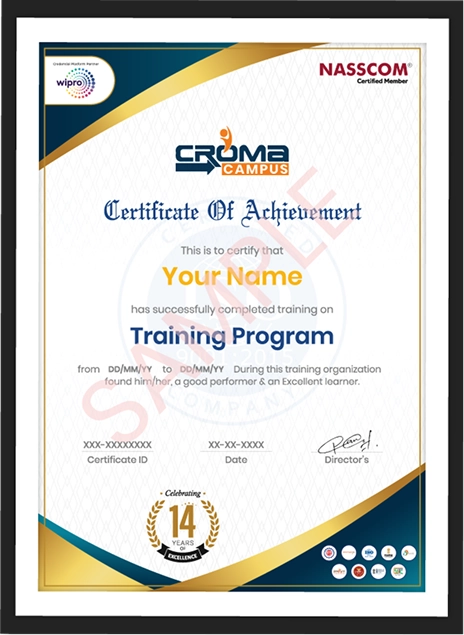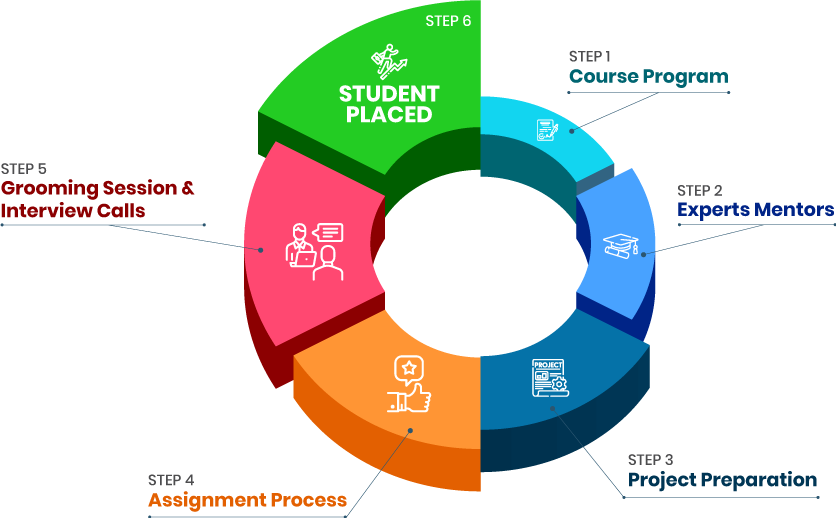Course Design By
Nasscom & Wipro
Comprehensive Curriculum: Learn from a well-structured program that covers basic theories and practical application modules.
Practical Application: Work on real-world case studies and projects to apply what you have learned to solve complex problems.
Expert Guidance: Get insights and mentorship from industry experts who will guide you throughout the course.
Innovative Learning Resources: Access a variety of resources, including video lectures, interactive sessions, and supplementary materials.
AI Enthusiasts: Anyone eager to explore the exciting field of Generative AI and expand their knowledge.
AI Professionals: Those looking to improve their skills and dive deeper into Generative AI for better career opportunities.
Tech Innovators: People passionate about using AI creatively in different areas, from arts to technology.
Artificial Intelligence Basics: It is helpful to have some understanding of AI concepts and principles.
Programming Fundamentals: Basic programming skills will help you grasp the course content more easily.
Access to high-paying roles in tech giants and startups.
Opportunities for leadership positions in AI research and development.
Potential for rapid promotions and salary hikes.
Ability to work on cutting-edge AI projects across different sectors.
Enhanced job security in a rapidly evolving field.
Strong presence of tech companies and startups in Noida.
Access to industry experts and experienced trainers.
Focus on practical, hands-on learning and real-world applications.
High success rate of job placements post-completion.
Networking opportunities with professionals and peers in the AI field.
Designing and developing AI models and algorithms.
Analysing large datasets to extract meaningful insights.
Collaborating with cross-functional teams to integrate AI solutions.
Continuously monitoring and refining AI systems for performance improvement.
Staying updated with the latest AI research and technological advancements.
Technology: Driving innovation with AI-powered products and solutions.
Marketing and Advertising: Using AI to create personalized marketing campaigns.
Entertainment: Improving user engagement with AI-generated content.
Healthcare: Applying AI for predictive diagnostics and advanced research.
Art and Design: Merging AI with creative processes and digital artistry.
we train you to get hired.

By registering here, I agree to Croma Campus Terms & Conditions and Privacy Policy
+ More Lessons
Course Design By

Nasscom & Wipro
Course Offered By

Croma Campus

Stories
success
inspiration


career upgrad


career upgrad


career upgrad


career upgrad
12-Jul-2025*
14-Jul-2025*
09-Jul-2025*
12-Jul-2025*
14-Jul-2025*
09-Jul-2025*

You will get certificate after
completion of program

You will get certificate after
completion of program

You will get certificate after
completion of program
in Collaboration with






Empowering Learning Through Real Experiences and Innovation

we train you to get hired.

Phone (For Voice Call):
+91-971 152 6942WhatsApp (For Call & Chat):
+91-971 152 6942Get a peek through the entire curriculum designed that ensures Placement Guidance
Course Design By


Course Offered By

Ready to streamline Your Process? Submit Your batch request today!
The course covers fundamentals of generative models, including GANs and VAEs, along with practical applications.
The certification enhances your credentials and opens up career opportunities in various AI-driven fields.
The training duration typically ranges from a few weeks to a few months, depending on the program.
Basic knowledge of programming and machine learning is recommended for enrolling in the classes.
Yes, the certification is widely recognized and valued by employers in the AI industry.
Yes, the classes emphasize practical, hands-on projects to ensure thorough understanding and skill application.

FOR QUERIES, FEEDBACK OR ASSISTANCE
Best of support with us
For Voice Call
+91-971 152 6942For Whatsapp Call & Chat
+91-9711526942